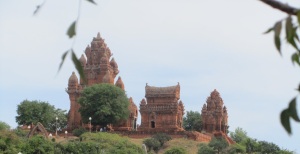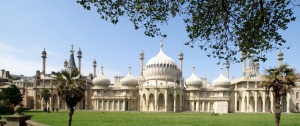International Conference, April 25-26, 2014 in New Delhi
The Indira Gandhi National Centre for the Arts proposes to hold an International Conference on Cham Art Heritage of Vietnam. The Cham people are the inhabitants of mountainous region of Central – South Vietnam, Cambodia and Laos. Currently, they numbered over six hundred thousand who are descendants of a mighty kingdom called Champa which flourished in Central part of Vietnam. They are people of Malayo Polynesian origin. Champa of Vietnam appeared in the epigraphic record as Champaura / Campanagra reminds us a historic city of India.
The Cultural heritage of Champa appears to be very ancient one that can be traced from the dvapara era with the establishment of mukhalinga of Shambhu (Shiva) in Kauthara by king Vicitrasagara or Vicitra. This name Sagara recalls the King of Ayudhya mentioned in the Ramayana. Epigraphic records mention the beginning of the rule in the kingdom of Champa. It is god Sambhu who sent Uroja to occupy the throne of Champura.
Historically, the Kingdom of Champa began in the end of 2nd Century A.D., then known as kingdom “Lin-yi” in the Chinese sources. In the course of time, they gradually adopted aspects of Indian civilization in the selective manner. The Cham script is of Indian origin and their art forms betray Indian influences while maintaining their autonomous status. Their various principalities such as Panduranga, Vijay, Kauthara, Amaravati etc. are all derived from Indian proto types.
The Cham followed Hinduism based on veneration of Indian trinity: Brahma, Vishnu and Shiva, and the Shakti or wives of the latter two. But Siva was the root of the State of Champa. He was usually worshipped in the shape of lingam, covered with a sheath or Kosha, often of gold, depicting the faces of the god. Besides, god Ganesha, Skanda, Nandi, Garuda were highly venerated as they are depicted in art. With the foundation of Mahayana monastery of Lakshmindralokesvara at Dong-Duong (Quang-Nam province) by Indravarman II in the year 875 A.D,, Buddhism began to exercise its influence on Champa. Thus, both Hinduism and Buddhism flourished side by side. The kingdom Champa seized to exist as an independent kingdom in fifteenth century A.D.
During historical periods, Cham produced significant Hindu and Buddhist temples besides sculptures of both Hindu and Buddhist deities. About 300 bricks temples still survive ranging from seventh to fifteenth century in the central and southern parts of Vietnam. These temples are distinguished by the reliefs of terracotta and stone sculptures of Hindu and Buddhist gods and goddesses. A large number of them, now preserved in Danang Museum, reveal Gupta and post-Gupta art styles submerged by indigenous art idioms.
The Cham people cultivated Sanskrit language. Their mother tongue is a Cham language of Austronesian family. A large number of the inscriptions have been found in both Sanskrit and Cham language. The people of Champa were also fond of music. A number of musical instruments are depicted on the reliefs of the temples. Even today, at every religious and social ceremony, they use various musical instruments which are heavily influenced by the Indian, Khmers, and musical instruments of neighbouring areas.
The Cham civilization has been focus of studies and conferences in the field of history, language, religion, culture, art and architecture. However, its inner connections and its external relations have so far not been studied in depth. The International Conference on Cham Art Heritage of Vietnam: Ecological Cultural and Art Historical Traditions” has been planned to explore cultural interface which distinguishes Cham civilization. The proposed panels of the Conference are:
I. Polynesian, Indian and Indigenous context of Cham art.
II. Interface of Art and Ecology in Cham Art.
III. Connections of Cham art with Indian and South East Asian Art Styles.
IV. Cham Architecture and Its connection with India and South East Asia.
V. Chams Musical Instruments in the wider context of Indian and South East Asian Traditions.
VI. Any Research on Champa based on epigraphy and recent field work
Contact:
International Conference
“The Cham Art Heritage of Vietnam:
Ecological, Cultural and Art Historical Traditions”
25-26 April, 2014, at IGNCA, Janpath, New Delhi, India
e-mail: bachchan_kumar@yahoo.com

Cham temple in Vietnam



